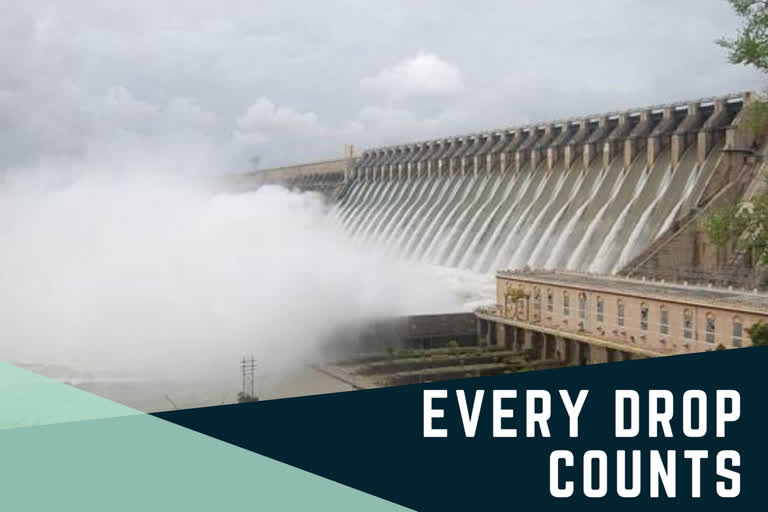Hyderabad: Water is the lifeline of all creatures. Without water, no life form can exist. Human beings can go on for a few days without food, but cannot survive without water. Therefore, it is imperative for both the citizens and governments to conserve water bodies, prevent wastage and create new water resources.
There were abundant rains in the Telugu states. As the upper catchment areas overflowed, there was a huge inflow of water into Krishna and Godavari rivers. This water must be effectively stored for future usage. But it is disturbing to see that no efforts are being put in this regard.
There was a rise in water consumption worldwide from 1960. As a result, water resources are gradually decreasing. 17 nations which constitute one-fourth of the worldwide population are facing severe water crisis. In these nations, agriculture, industries and urban population are using up to 80 per cent of the available water.
44 nations which constitute one-third of the world population are using up to 40 percent of water and are on the brink of water crisis. Due to the wide gap between availability and supply of water, there is a rise in drought-prone areas. The impact is felt on livelihoods, employment, agricultural produce, food safety and business durability. Increasing population, urbanisation, socioeconomic development and industrialisation are leading to an increased demand for water.
90 per cent of Indian cities are getting water through water pumps. More than 80 per cent of the villages do not have water supply. Consequently, women and children are forced to walk many kilometres to fetch water. After Independence, the governments concentrated on irrigation systems and construction of reservoirs. They did not give much importance to drinking water resources. Gradually, the governments realised the importance of effective water resource utilisation according to the needs of citizens. As a result, the first National Water Policy was introduced in 1987.
In famine-prone areas, monsoons are the major source of water. In northern states, the surface water levels are higher. The situation is different in southern states. In this region, the terrain is mostly rocky. Rainwater harnessing is difficult in this region. In many regions across India, an average of 500-millimetre rainfall is recorded, especially during the rainy season. Keeping in view the rainfall, 10-12 square meter area can be used to store either surface or groundwater.
Read: Water crisis in India: Hard times for cities
In recent times, people of Rajasthan and Tamil Nadu faced severe water crisis. The gravity of Tamil Nadu’s water scarcity is well known. There is an evident failure in preserving available surface water. Due to industrial wastes, chemical fertilizers and other toxic particles, groundwater levels were polluted. Usage of poor-quality pumps, leakage of sewage water into drinking water due to cracks in the pumps caused several diseases among people. Rajasthan is another state which faces water scarcity. The provision of drinking water through canals is nominal in this region.
According to the NITI Aayog report, 2018; India stands 13th among the countries which are facing severe water crisis. The population in India is three times more than the 17 nations which together constitute one-fourth of the world population.
According to the Central Ground Water Board’s report, 2018; the groundwater levels are reducing by 8 centimeters every year. The effect will be felt on the nation’s economy as well. If the water issue is not taken seriously, the conditions will further worsen in the next few decades.
According to a survey by the International Resource Panel, 2019; Saudi Arabia, which ranks 8th in water scarcity, is working towards conserving every drop of water and its aim is to reduce water usage by 43 per cent in a decade’s time. Namibia, which ranks 37th has been recycling drainage water from the past 50 years. Australia, which ranks 50th cuts off domestic water usage by half during the time of drought. China, which stands 56th is incorporating water harvesting units in newly constructed buildings.
Water cannot be created in any other way except by evaporation and condensation. There is no other way except carefully utilising the limited water resources. Therefore, every drop of rainwater must be conserved and drainage water must be recycled. Usage of recycled water and moving towards crops which require less water is the need of the hour. Citizens must also do their part in water conservation. With all these measures, we can overcome the crisis.
Read: To tackle crisis, India needs to develop water conservation culture



